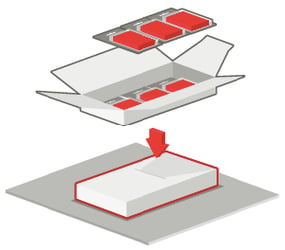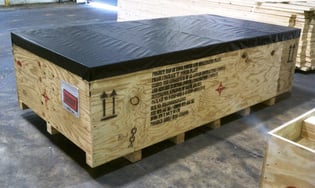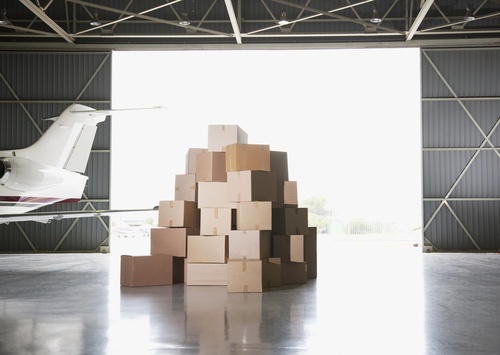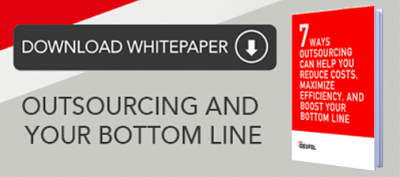In aviation manufacturing, the little things can easily become the big things. Yes, you’re producing a massive plane that may take months, or even a year or more, to complete. In an isolated case, a few wasted minutes may not make much impact. You know better than anyone, though, how wasted time can add up when it’s compounded thousands of times. A few minutes here and there can quickly aggregate into a serious delay.
To stay in budget and on schedule, you need (your engineers) focused on their core tasks, not unpacking and scrapping dunnage.
Nowhere is this more evident than in the way your employees unpack crates and containers from your vendors. You have thousands of parts coming in from vendors all over the world. They’re all packed to different standards and many of the parts are vulnerable to the elements or movement while in transit.
 The result? The crates are filled with dunnage. Wood, cardboard, foam — they’re all commonly used by aviation vendors to protect part quality. While you may appreciate the commitment to quality, you don’t appreciate the sight of your highly paid skilled workers spending their time sifting through dunnage.
The result? The crates are filled with dunnage. Wood, cardboard, foam — they’re all commonly used by aviation vendors to protect part quality. While you may appreciate the commitment to quality, you don’t appreciate the sight of your highly paid skilled workers spending their time sifting through dunnage.
Let’s face it: Your engineers, machinists, and other skilled team members are the best of the best, and you pay them accordingly. To stay in budget and on schedule, you need them focused on their core tasks, not unpacking and scrapping dunnage.
To maximize your team’s productivity and time, you need your parts to arrive at their final destination in an easily accessible package. That means your worker opens the package, gets the parts they need, and gets back to work. No sifting through foam peanuts or breaking down cardboard.
Maximize Productivity With Custom Aviation Packaging
What’s the solution? You need to protect the quality of your parts, but you also need to protect your team’s time.
One innovative solution is to partner with a packaging design and engineering company that is experienced in the aviation industry. You can then work with the packaging partner to analyze your supply chain and implement a solution.
An especially effective strategy is to open a supply chain hub that is managed by your packaging partner. The parts from your vendors are shipped into the hub, where staff unpacks the crates and eliminates the dunnage. The parts are then repackaged and sent to your nearby facility.
When the parts arrive at your facility, they’re routed directly to the end user and they’re packed in a way that is easy to access. Your team member quickly gets the parts they need and gets back to work. This strategy works best when the hub uses reusable packaging. That way, the package can be sent back to the hub for use with a new round of parts.
Another potential strategy is for the packaging company to work directly with your vendors. They can help you establish packaging standards and help your largest-volume suppliers implement more efficient packaging methods. Granted, this approach may be difficult to execute with a large number of vendors, but it could be helpful for suppliers that send a large number of packages.
The benefits of working with a packaging company to optimize your supply process are clear. First, you save time. It may be a matter of only a few minutes per package. However, if you’re receiving thousands of shipments for each project, those few minutes could mean the difference between success and failure.
Don’t waste time on tasks that are better handled by a trusted partner.
You also use your high-skilled labor in a more efficient way. They spend less time unpacking crates and eliminating dunnage, and more time doing what they do best. Finally, you get the dunnage out of your facility, which means reduced costs for waste removal.
Every minute counts on complex aviation production projects. Don’t waste time on tasks that are better handled by a trusted partner. Evaluate your supply process and consider consulting with a third-party packaging specialist to reduce your dunnage and your wasted time.






Let Us Know What You Thought about this Post.
Put your Comment Below.